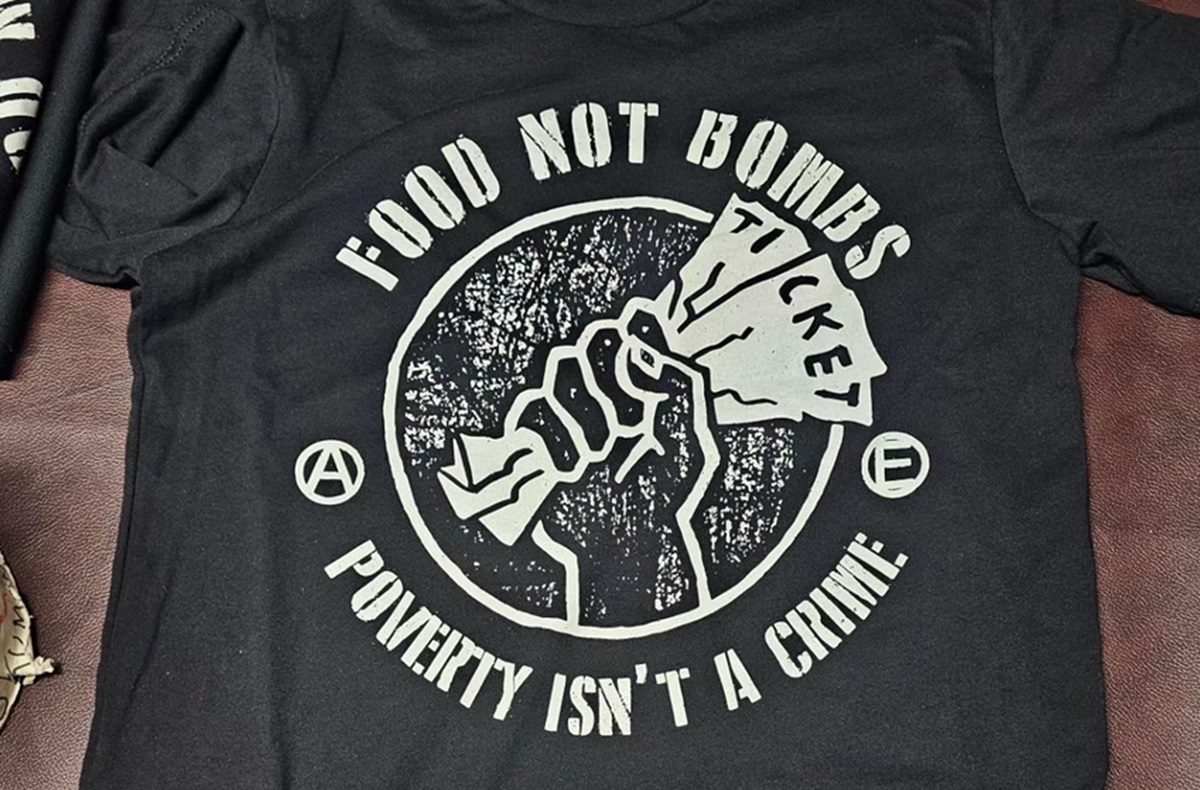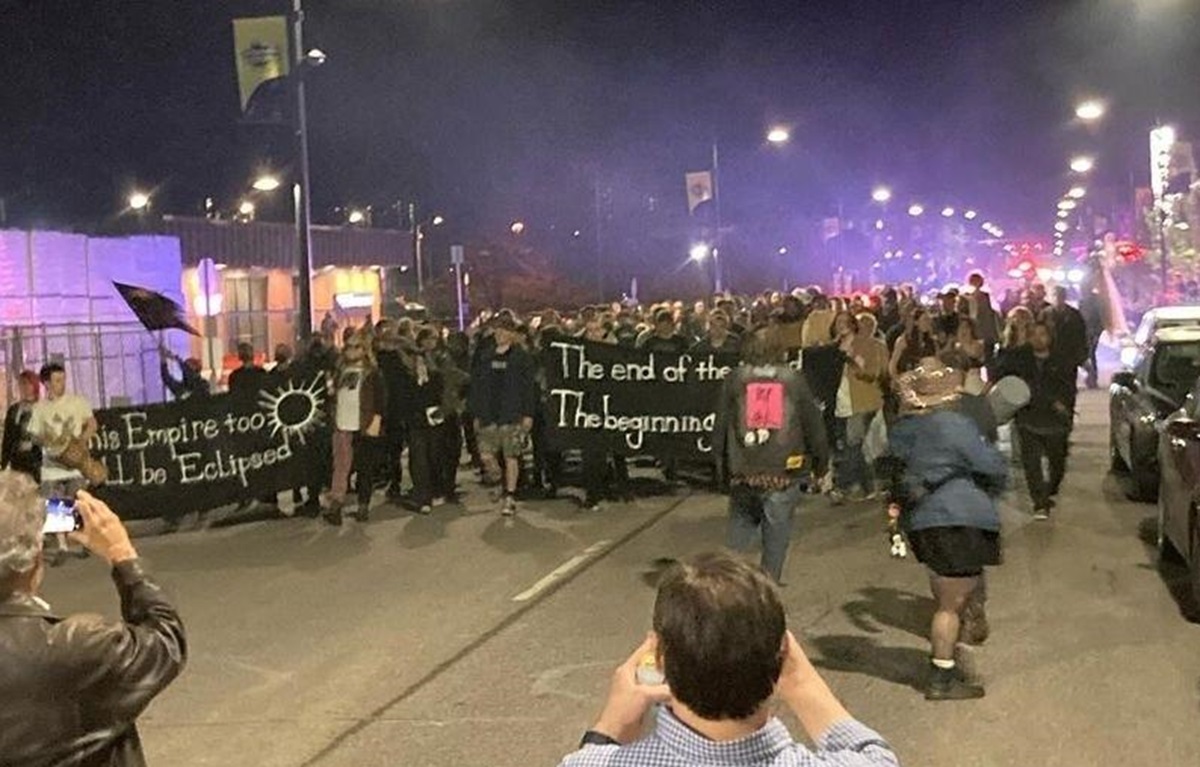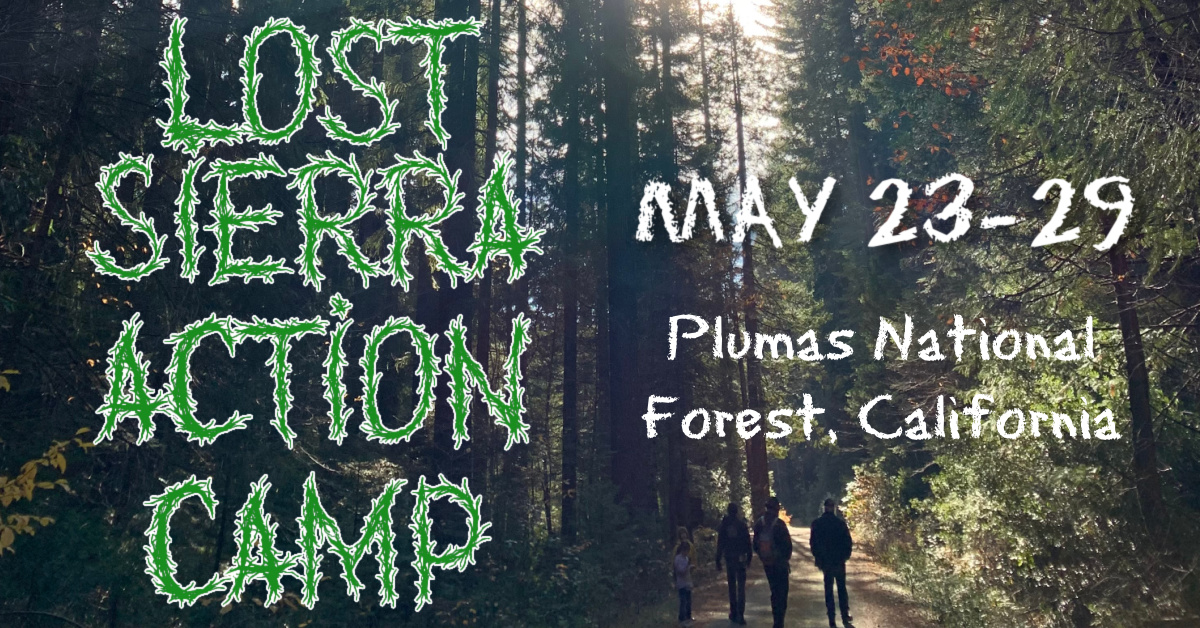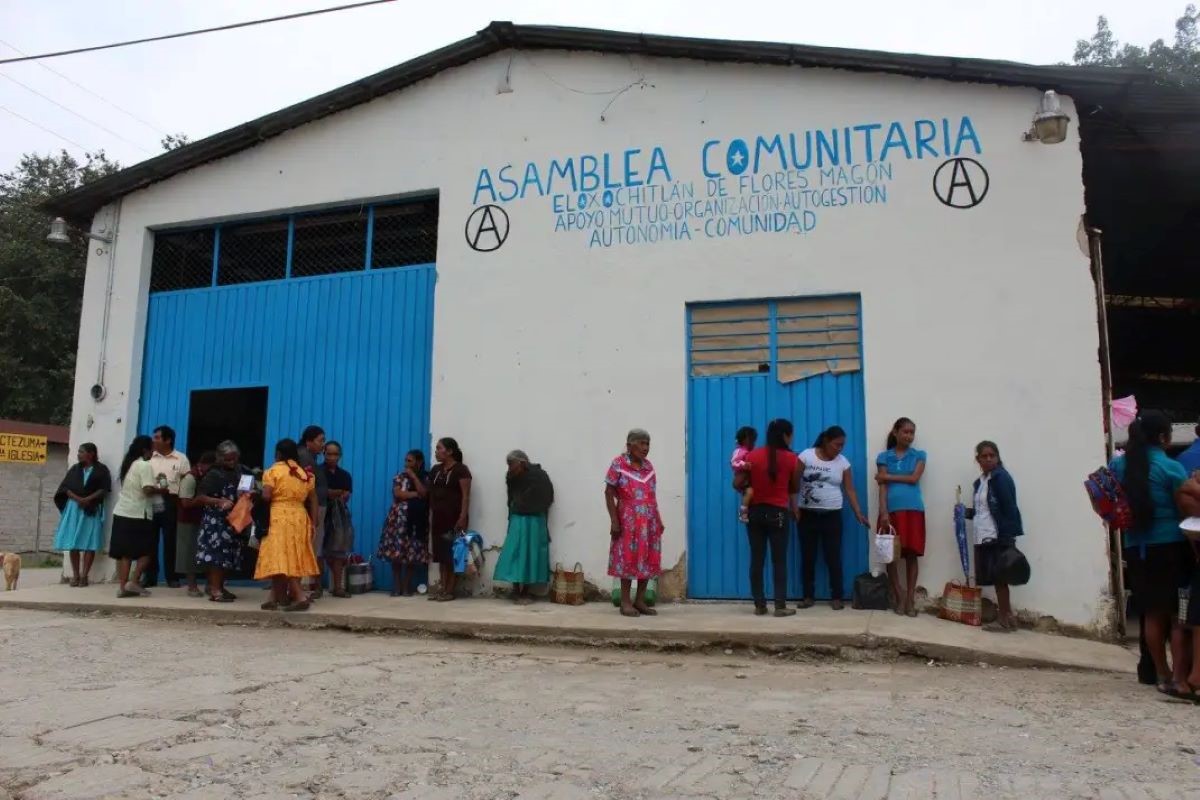Filed under: Analysis, History, US
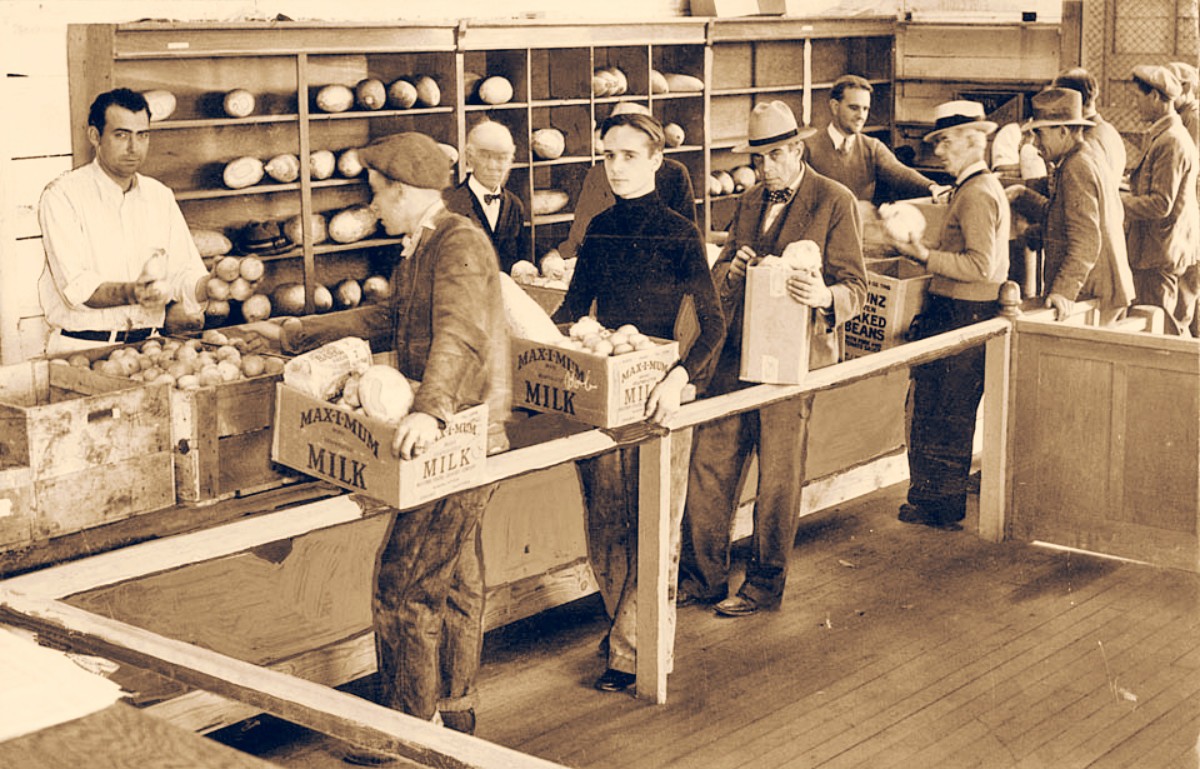
Cover Image: Workers at a cooperative store being paid in vegetables.
A look back at mutual aid driven, autonomous, and cooperative responses in the bay area of California and beyond during the Great Depression.
“When, as a last resort, we join together to work for one another and share the result of that work, we make a great discovery: that the other’s success is our own.”
– Carl Rhodehamel, founding member of the Unemployed Exchange Association (UXA)1
As coronavirus spreads and the death toll begins to climb, our most immediate concern is (and should remain) staying healthy and supporting our communities through the immediate crisis. As radicals, however, we must also begin to strategize how we will respond to the economic collapse that will continue to affect our lives long after a vaccine or herd immunity render the virus itself a past issue.
Mainstream media is already estimating we may see as high as 30% unemployment in the wake of the epidemic 2, beyond what the country experienced during the Great Depression of the 1930s. Despite the difference in scale, we can still learn a great deal from the response of working people cast out of the capitalist system nearly a century ago.
Workers at a canning cooperative. Source seattlepi.com
Most of us are familiar with the State-sponsored Works Project Administration (WPA), but few are aware of the massive network of self-help mutual aid cooperatives that were autonomously organized by unemployed workers years in advance of the State response. The famous novelist and Socialist politician Upton Sinclair based his 1934 run for Governor of California on what he called the End Poverty In California (EPIC) plan, which proposed to use public money to strengthen and expand self-help worker cooperatives as the fabric of a new economy.
Sinclair believed that the Depression was the end of capitalism as it had existed and that the burgeoning cooperative movement, with proper support, could rise from its ruins and bring about a more equitable society. John Curl describes the early days of the cooperative movement:
“In the summer and fall of 1932… groups were organizing around the state and across the country, over one hundred in California alone. They appeared wherever conditions were ripe among the unemployed and underemployed, particularly near farming areas. It was truly a spontaneous mass movement, spread by the wind, an idea whose time seemed to have come. By the spring of 1933, there were at least 100,000 members in about 175 groups in California, and another 50,000 in 100 groups around the nation. Over the next two years over half a million people were involved in at least 29 states…Several forms of Self-Help were usually distinguished, although most groups practiced them all to varying degrees: exchange among members, exchange of labor for goods or services, cooperative production for trade or sale. Exchange among members was the most widespread, and commonly involved part-payment in cash. It was only in the later stage of the movement that many groups turned to production, and most never did to an appreciable extent.”3
On a basic level, workers recognized that the infrastructure of industrialized capitalism was sitting idle due to monetary scarcity brought about by economic collapse and that they, as workers, possessed an abundance of labor power. They began bartering their labor in exchange for direct shares in what was produced, setting up distribution hubs and a point-based accounting system in which all work was valued equally. They recognized that the Depression was simply exacerbating the inherent contradictions of capitalism, leading to a breakdown. To survive, they organized themselves into an alternative economy grounded in what they termed “production for use,” in contrast to the prevailing system of production for profit. 4
Upton Sinclair provides an example of the sort of deals made by the co-ops in a pamphlet promoting his EPIC plan:
“They would find a crop of fruit which the farmer would let them have, in return for painting his barn; they would find a paint merchant who would take a cord of wood from a man who would take some of the fruit. Some of the deals were highly involved, with dozens of different services in a circle of transactions.”5
While at first glance such a system of barter may seem inefficient, one has to remember that under capitalism a portion of nearly every transaction is siphoned off for the sole purpose of enriching the owning class. In systems where workers control the result of their labor, it is possible to build community wealth and to build a sense of security and abundance. Value in a monetary system is also highly arbitrary, while barter enables more nuanced decisions — about available resources, logistics, and need — than a system where items simply cost as much as the market will bear. By dealing with each other directly and forming real human relationships, we are more likely to act in ways that are mutually supportive rather than ways that are purely transactional.
The Unemployed Exchange Association (UXA) of Oakland, California was widely hailed as the most developed group in the movement despite their modest size in comparison to some of the Los Angeles cooperatives. They exhibited a high level of organizational sophistication, refusing involvement in divisive electoral politics in order to maintain class solidarity and focusing instead on the immediate needs of the people involved.
“They exhibited a high level of organizational sophistication, refusing involvement in divisive electoral politics in order to maintain class solidarity and focusing instead on the immediate needs of the people involved.”
Their decision-making took place in a general assembly of section heads who met at a round table, with each section head acting as a recallable delegate of the group of workers from which they were sent. Despite early raids on their meetings by the Red Squad of the Oakland police department, the UXA grew rapidly, expanding in two years from a local self-help barter group into a productive force extending far beyond Oakland. They formed their own town in the Sierra Foothills above Oroville, started ranches in the Central Valley, and operated a lumber mill in the Santa Cruz mountains.
Of the movement, John Curl wrote:
[In] an abandoned grocery store that can be used for meetings, and a group of six unemployed begin to meet and discuss ways out of their problems. Carl Rhodehamel said, “Since the money system isn’t working, we should form our own system, and not use money at all: we should aim at providing ourselves with everything we need to live, by barter.”
He is not the only one with that idea. Barter groups of the unemployed are already operating in Seattle and L.A., and are forming all around the country. The other five, like Rhodehamel, are skilled and experienced workers, but all realize it could be years, if ever, before they’d find work in their fields again. They decide to try the idea. They begin going door to door in the neighborhood, the Dimond-Allendale district of East Oakland, offering to do home repairs in exchange for “junk” from people’s basements and garages. It works.
They began organizing the residents to fix up each others’ houses and to recirculate every variety of article and item among themselves to where it would be useful. There had been little work done in the three years since the crash of 1929, so there was a great backlog of home repairs to be done. The abandoned grocery became their first storeroom and commissary, soon overflowing with household and industrial articles. Broken items were repaired or rebuilt. The neighborhood, previously choked with despair and immobility, was suddenly bursting with activity and confidence. People poured into the new organization.
They soon began sending scouts around Oakland and into the surrounding farm areas, to search out salvageable things and make deals with their owners for them. Labor teams followed. All work was credited at one hundred points per hour. Members exchanged points earned for their choice of items in the commissary. Each article brought in was given a point value, which approximated the labor time that went into it, with some adjustment for comparable money value. They also offered many services for points, including complete medical and dental, garage, nursery school, barber. They provided some housing and all of their firewood needs. At their peak they would distribute forty tons of food per week to their 1500 members. They called it Reciprocal Economy.
In his EPIC plan, Sinclair made the case that injecting relief funds into the lean, efficient mutual aid cooperative structure would provide far greater material relief to the unemployed and working poor than a centralized State response. In addition, investment in the infrastructure of the rapidly developing production-for-use economic system would position it to survive as the wider economy began its recovery. Many within the self-help cooperative movement believed that self-organized networks of workers could successfully run the entire economy, taking over where capitalism had failed. Perhaps for exactly this reason, the forces of capital strongly opposed the EPIC plan and Sinclair’s run for Governor was defeated.
The Works Project Administration (WPA) soon began to offer cash-paying work to the unemployed, much to the detriment of the cooperative movement. Oser Price describes what happened:
“The thing that killed the UXA was the cash flow from the WPA. It drained off people who needed money – and everybody did need some. People couldn’t be in both the UXA and in WPA at the same time. Those who had to have cash took WPA. Soon there weren’t enough people available to make the UXA work.”6
Very quickly, the majority transitioned, from working together in a self-organized context and sharing in the product of their labor, back to currency-mediated, hierarchical employment building massive public projects often devoid of real purpose. From there, it was all too easy to fall back into working for the owning class.
Today, we have the past to guide us as we plunge headfirst into what will likely turn out to be the greatest economic crash capitalism has ever seen. It is within our power to ensure that capital does not survive, that the mutual aid systems we build in these coming months do not whither as soon as meager, below-subsistence wages are offered to us once again. Instead, we can choose to build up resilient community-controlled institutions to provide for our basic needs, freeing us from the requirement of doing work that perpetuates capitalist social relations.
The path of building something new is perhaps the more challenging option, but we must not miss this moment in which the weaknesses of the dominant systems are exposed. As the coronavirus will soon prove, capitalism will allow the deaths of working poor, disabled, unsheltered, and otherwise marginalized people in this crisis. Our world, doomed to dramatic climate disruption, has many more crises to face. Only by building community-controlled infrastructure in these moments of rapid change can we improve the chances of survival for regular folks.
What can we do today, while most of us remain at home due to shelter-in-place orders and face-to-face organizing is impossible? We can start by cataloging the skills and resources available in our community. Historically, many groups have used physical databases (think drawers full of index cards) to organize information on who has what skills and their capacity to contribute energy to others in the network.
Today, we could easily compile such information through existing online systems, such as those developed by time banks or even just posting in forums or groups. We should exercise caution in relying on corporate-controlled websites (Facebook, Google Drive, et al.), as we cannot count on them to remain available to us for this organizing as the current crisis deepens, or when we shift into a period where the crisis is characterized not by a virus but by large-scale social movements in the streets. If we are to use digital tools to organize our mutual aid networks, we need to build community-controlled digital infrastructure that can be relied on when the State and corporate interests try to restrict our access to the internet.
So much mutual aid has already been coordinated over the internet, both in this moment and in other contexts over recent years, that developing a community-run alternative is an important piece of the overall project of increasing our local interdependence and resilience. In his novel Little Brother, Cory Doctorow describes a chilling scenario in which the Bay Area is subject to a violent ‘terrorist’ attack and the State restricts all online communications as well as in-person gatherings. Young people re-purpose hardware available to them, in the novel choosing old Xbox consoles, to build a mesh network — an alternative to the centralized internet where each device talks directly to another, ‘meshing’ together to enable large-scale communications.
In the real world, open source community initiatives have been building mesh networks for years: in the East Bay, peoplesopen.net has been programming easily accessible home wifi routers. They have experimented with solar-powered mesh nodes with long range potential, a key piece of infrastructure that could enable communications between people involved in mutual aid work in the event that cell phones and the internet are less reliable. From home, we can immediately work to transition our mutual aid resource lists and communications off corporate-controlled servers and onto open-access platforms that allow us to download the data and create our own redundant local backups that can be used even if the internet becomes inaccessible.
“If we can learn from our past endeavors, building upon success and avoiding common pitfalls, we will emerge from this crisis with robust, flexible networks ready to continue reshaping the world in which we live.”
The best-case scenario for our efforts as anti-capitalists and revolutionaries is to simultaneously alleviate the worst effects of this crisis on our communities and create lasting networks of interdependence and empowerment. The lifestyle of going to work every day, paying our rent on the first of the month, and channeling our desires into the purchase of consumer goods is currently in question. We are acting in a time when massive changes that recently seemed impossible are occurring daily, even within the centers of power. Housing for all suddenly makes a great deal of sense when keeping warm and healthy may reduce hospital crowding, as does fully socialized medicine, freeing those incarcerated for nonviolent ‘crimes,’ and preventing some individuals from hoarding essentials to the detriment of the health of others. This final point on hoarding in particular speaks to the moment of opportunity for anti-capitalists to point out the inherent evil of a system that encourages accumulation without limit regardless of the damage done to people and the planet. As proclaimed in the popular meme, capitalism is the virus.
If we can learn from our past endeavors, building upon success and avoiding common pitfalls, we will emerge from this crisis with robust, flexible networks ready to continue reshaping the world in which we live. As the self-help cooperatives of the 1930s demonstrated through their diverse and distributed nature, mass-scale creative collective action is not only possible but inevitable when large percentages of the population are suddenly without work.
Mutual aid relief projects often energize and politicize the communities they work with, and as the dire need for emergency relief wanes that energy should be directed into community organizations that can sustain us through the economic crash, such as land trusts, social centers, radical presses, and art spaces (among others). In the long term, shifting control of the various spheres of daily life, such as our workplaces and our homes, to accountable community-run entities is the foundation of building a society based on values other than the pursuit of profit. By continuing to practice mutual aid as well as building up community-controlled institutions that enable common ownership of essential infrastructure, we can create webs of interdependence that gain capacity as more and more people rely on them. As our comfortable routines are obliterated by the suspension of business as usual, we are left with the chance to reconsider our priorities and form new social practices based on collective care and solidarity.
For those looking for how to plug in, see this list of local mutual aid groups across the United States: https://mutualaiddisasterrelief.org/collective-care/
NOTES:
1 https://community-wealth.org/sites/clone.community-wealth.org/files/downloads/article-curl.pdf
2 https://markets.businessinsider.com/news/stocks/unemployment-surge-to-30-percent-q2-gdp-50-percent-james-bullard2020-3-1029022288
3 http://www.red-coral.net/UXA.html
4 http://depts.washington.edu/epic34/
5 https://www.ssa.gov/history/epic.html 6 https://community-wealth.org/sites/clone.community-wealth.org/files/downloads/article-curl.pdf



